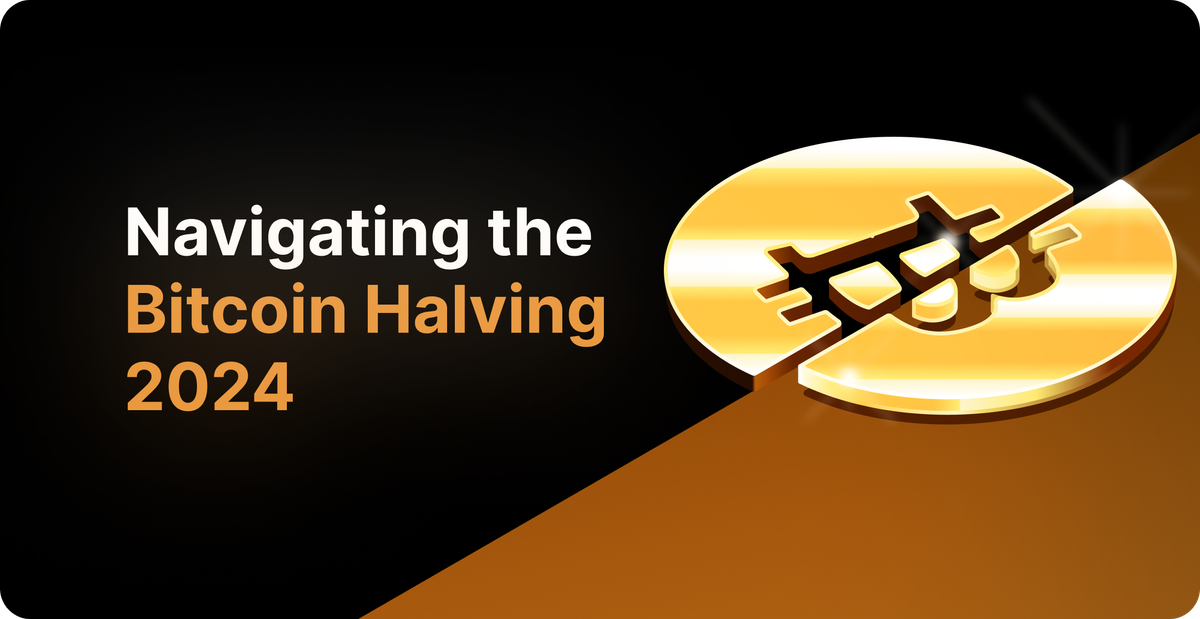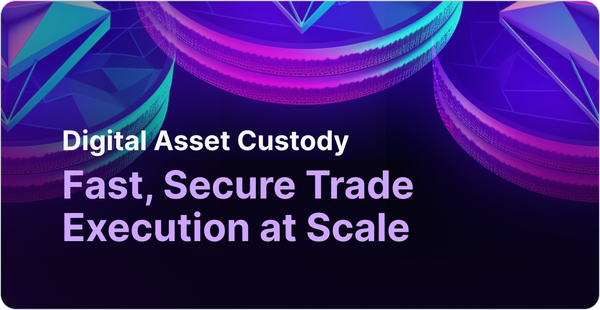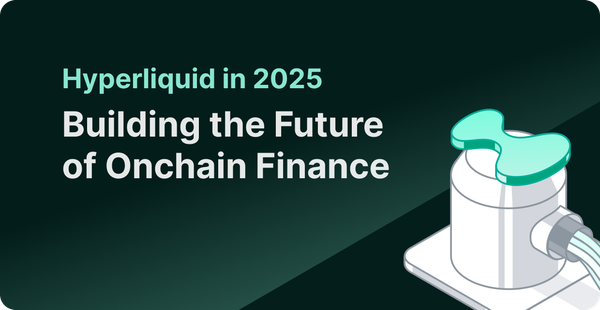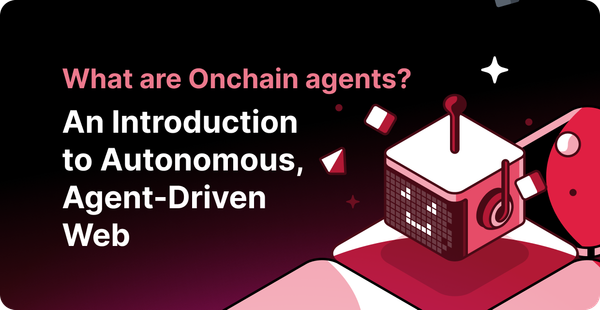A Quick Guide to the 2024 Bitcoin Halving
Bitcoin halving 2024 will reduce the rate of new Bitcoin coming into circulation. Learn more about the event, its history, and its impact.

Every four years, Bitcoin undergoes a major update known as the Bitcoin halving event — but why is it so important, and what do you really need to know about it?
The short version: the Bitcoin halving is important because it reduces the rate of new Bitcoins being minted into circulation, which increases the scarcity of each Bitcoin.
The even shorter version: soon, there will be less Bitcoin to go around, and that's a good thing.
Zooming out, the Bitcoin halving event is public, predictable, automated, and incorruptible — a complete departure from how monetary decisions are made by centralized institutions today. This way, Bitcoin halving truly reflects the ethos of decentralization and the antithesis of centralized institutions' policies.
The next halving event is fast approaching and is expected to take place in the next two weeks, i.e., when Bitcoin block #840,000 is mined.
This blog explains all you need to know about Bitcoin halving, its importance to the users, its historical context, and what we can expect from the 2024 halving.
Note: This is intended to be a source of information and education. We are not offering any financial and/or investment advice.
The Important Bits of Bitcoin's Halving
Here's the important bit about the Bitcoin halving event: it's a technical implementation of Bitcoin’s deterministic monetary policy.
What that means in practice is that the Bitcoin halving event is pre-programmed and designed to control the supply of Bitcoin entering circulation. It takes place every four years when 210,000 blocks are mined on the Bitcoin blockchain and was set by the Bitcoin source code to ensure a predictable and controlled supply of new Bitcoin being introduced to the world.
To fully grasp the significance of the Bitcoin halving, it is important to know the basics of Bitcoin issuance, miners, and block rewards.
Bitcoin issuance
The process of introducing new Bitcoin to circulation is known as Bitcoin issuance. New Bitcoins are 'mined' by Bitcoin nodes or miners, and the rate of new Bitcoins being mined is updated every time there is a halving. Bitcoin has a hard cap on its supply at 21 million coins, which is designed to prevent inflation by ensuring Bitcoin remains deflationary. Think of it like gold: there's only a finite amount of gold to go around, so Bitcoin, like gold, appreciates value over time in a deflationary manner. This is very contrary to modern fiat currency, which is inflationary by design as more new money is printed and added to circulation.
Miners
Miners are nodes (computers) that process transactions on the Bitcoin blockchain and, in turn, secure the network. Since Bitcoin employs a PoW (proof of work) algorithm to resist sybil attacks, the miners must solve complex cryptographic puzzles to qualify to add a new block and receive miner rewards, i.e., new Bitcoins.
Block rewards
Miners, upon successfully adding a new block to the blockchain, receive new Bitcoin as miner rewards. The block reward was set in 2009 at 50 BTC for every new block added, but due to the scheduled halving events, that reward has been cut in half every four years.
From 2009, there have been three Bitcoin halving events in 2012, 2016, and 2020. The 50 BTC reward has been slashed thrice from 50 to 25 to 12.5 and finally to 6.25. Today, the block reward stands at 6.25 Bitcoin for every successful mining effort, but the 2024 halving event will cut that to just 3.125 new Bitcoin for every block.
Why have the halving?
After learning the context of Bitcoin's halving, let’s understand the ‘why’ behind this process:
Mimic gold mining
Bitcoin's halving can be seen as a virtual replica of gold mining. Similar to how gold becomes harder to mine over time because of fewer new gold deposits being found, Bitcoin's halving makes new Bitcoin harder to create and come by. In a sense, the value proposition of Bitcoin as a scarce asset is enforced by the halving.
Upholding network security
Bitcoin's halving is an important security measure for Bitcoin's blockchain because it rewards honest miners who maintain the decentralized integrity of the blockchain. This is further reinforced by the halving event because, as miner rewards go down, the cost of attacking Bitcoin's blockchain by gaining majority control becomes increasingly more and more expensive, which deters attackers.
Countering inflation
Bitcoin's halving helps to manage inflation by reducing supply and slowing down issuance, i.e., bringing new Bitcoin to circulation. Inflation is often caused by an uncontrolled and excessive supply of a commodity or currency. Coupled with Bitcoin's hard cap on supply at 21 million, the halving ensures Bitcoin remains a deflationary asset, mitigating the risk of inflation.
Incentivizing miners
On paper, Bitcoin's halving reduces the incentives to miners. However, it demands miners to focus on efficiency i.e. reduce costs of mining against the fixed rewards.
In another tangent, since Bitcoin's halving reduces supply, it increases the value of existing Bitcoin. This increases the value of the rewards each miner receives, indirectly offsetting the slash in the amount of Bitcoin rewards.
Enforcing the monetary policy
As mentioned above, Bitcoin's halving is a technical implementation of Bitcoin’s deterministic monetary policy. It ensures a predictable issuance schedule. The key part of this implementation is that it is hard-coded and automated, thereby leaving no space for any party to influence the event.
This way, Bitcoin's halving also maintains the integrity of the blockchain.
Previous Bitcoin halving events
Now, let’s dive into the history of Bitcoin halving events to set up an objective context for what we can expect from the 2024 halving.
Here is a quick rundown of the key metrics during the last four halvings:
Source: TradingView
Key takeaways:
- The price of Bitcoin in a one-month frame has increased only modestly across the previous three halving cycles, as compared to a one-year frame.
- This short-term sideways moment can be attributed to Bitcoin halving being a public and well-known event. Hence, the increase in scarcity due to halving is already priced in.
- The long-term effect over a one-year frame shows how reduced supply pressure increases scarcity and, over time, drives the price upward.
Miner sustainability
Key takeaways:
- The price appreciation in Bitcoin has offset the decrease in the reward amount.
The hash rate has grown over the years without a noticeable correlation with the price of Bitcoin, and because the Bitcoin price has gone up significantly compared to the hash rate, the halvings have not significantly impacted miners.
- The growth in hash rate, coupled with reduced rewards, might make mining exclusive.
Individual miners or small-time miners might find it expensive to mine as the hash rate grows, leading to big companies with massive hardware infrastructure dominating Bitcoin mining, reducing the network’s decentralization.
Apart from block rewards, Bitcoin miners have only one other source of revenue, i.e., transaction fees.
However, the revenue from fees has historically been less than 10% of the total miner revenue. While it has been less than 5% for a long time, the incremental increase in fees is courtesy of interest in Bitcoin Ordinals and inscriptions.
So, unless the transactions and on-chain activity grow exponentially, Bitcoin halving will hurt miners and their sustainability.
Inflation control
As we mentioned earlier, the primary purpose of Bitcoin's halving is to control inflation. The chart reflects the same as there were sharp drops in the inflation rate during each halving event in 2012, 2016, and 2020. Each of the sharp drops can be followed by similar spikes in the price of Bitcoin.
The inverse correlation of inflation with the price of Bitcoin is consistent with the economic principle that scarcity tends to increase value.
What’s different about Bitcoin's 2024 halving?
The Bitcoin halving event in 2024 is distinct from its previous halvings for a variety of reasons. For starters, no other Bitcoin halving event followed an all-time high in Bitcoin’s price action. The 2024 event, however, comes on the back of Bitcoin reaching its all-time high of USD $71,000 in March 2024.
Here are a few other reasons that make Bitcoin halving 2024 a must-watch event:
Market maturity
The Bitcoin market and the cryptocurrency market, in general, are more mature compared to previous halving events. The regulatory landscape is clearer with nations clarifying their stances on cryptocurrency. El Salvador, a sovereign nation, has adopted Bitcoin as a legal reserve. Many major banks have invested in Bitcoin themselves, while a few more are facilitating trading desks for their retail users.
Institutional interest
The 2024 halving is taking place a few months after Bitcoin's major regulatory win with the introduction of spot Bitcoin ETFs. The institutional interest and presence add to the credibility of the market, while also bringing greater liquidity to the market, compared to previous halvings.
Mining industry consolidation
Leading mining companies like Marathon Digital, CleanSpark, and Riot Platforms are looking to maintain their profitability, even as the block reward halves, through innovative measures. Marathon Digital, for instance, is providing specialized services like "Slipstream" for processing large transactions.
Companies are also seeking to improve operational efficiency, for instance, by expanding into regions with more favorable conditions.
Emergence of ordinals
As mentioned earlier, miners' revenue will slowly increase their reliance on transaction fees. And the rise of Ordinals and NFTs on the Bitcoin blockchain introduces new use cases. On-chain activities like BRC-20 transfers mean more transactions and more incentives to miners.
The 2024 Bitcoin halving event is in the peripheral vision of a large chunk of the population, going beyond just the crypto-native enthusiasts. These eyeballs, coupled with all the above factors mentioned,, should fuel more interest and investment into the crypto and Bitcoin economy.
To serve the newly-found interest and influx of money, developers — the backbone of web3 — are a must. They are the ones who build experiences and applications to onboard new users, serve them with innovative use cases, and create an open and transparent economy.
QuickNode: empowering onchain traders and developers alike
QuickNode offers a comprehensive suite of services and tools to support developers and traders in web3. Applications and individuals alike should anticipate the sudden spike in interest and traffic that will arrive in the economy, and sharpen their toolkits to serve the increased demand.
For developers, QuickNode's dedicated node infrastructure for multiple blockchain networks would be a must-have to cater to all the increased traffic without any latency. Similarly, developers can employ QuickNode Streams to access real-time blockchain data. This is essential in terms of both user experience and data analytics.
For traders, every second is crucial, and congestion on blockchain networks is their death knell. To fix this, traders can use QuickNode’s tools and infrastructure designed to deliver high-performant trading. For instance, knowing the latest prices, aggregated from multiple exchanges across blockchains is crucial.
Similarly, they can use QuickNode’s dedicated clusters to land each of their transaction and not miss any. From translation simulation to gas estimation, QuickNode also improves the trader experience while making it more safer.
Beyond technical solutions, QuickNode is also committed to supporting the web3 community through educational content, technical documentation, and other resources. The QuickNode team is also available to help developers build solutions the way they want to.
Looking beyond Bitcoin's halving in 2024 — what's next?
What has changed for Bitcoin's halving this time around?
For one, the macro lens that's used to look at the event.
The institutional interest has leaned the economy towards stability, rather than speculative growth. Similarly, from a regulatory lens, there is an anticipation for further clarity from traditional finance institutions and governments. Interest from bystanders like non-crypto-natives is also increasing — a sign of mass adoption.
Looking at all these, there is no doubt that on-chain activity for Bitcoin will increase steadily, with both retail and institutional interest being served.

About QuickNode
QuickNode is building infrastructure to support the future of Web3. Since 2017, we've worked with hundreds of developers and companies, helping scale dApps and providing high-performance access to 25+ blockchains. Subscribe to our newsletter for more content like this, and stay in the loop with what's happening in Web3!





